Kuchipudi: Graceful Narratives in Motion
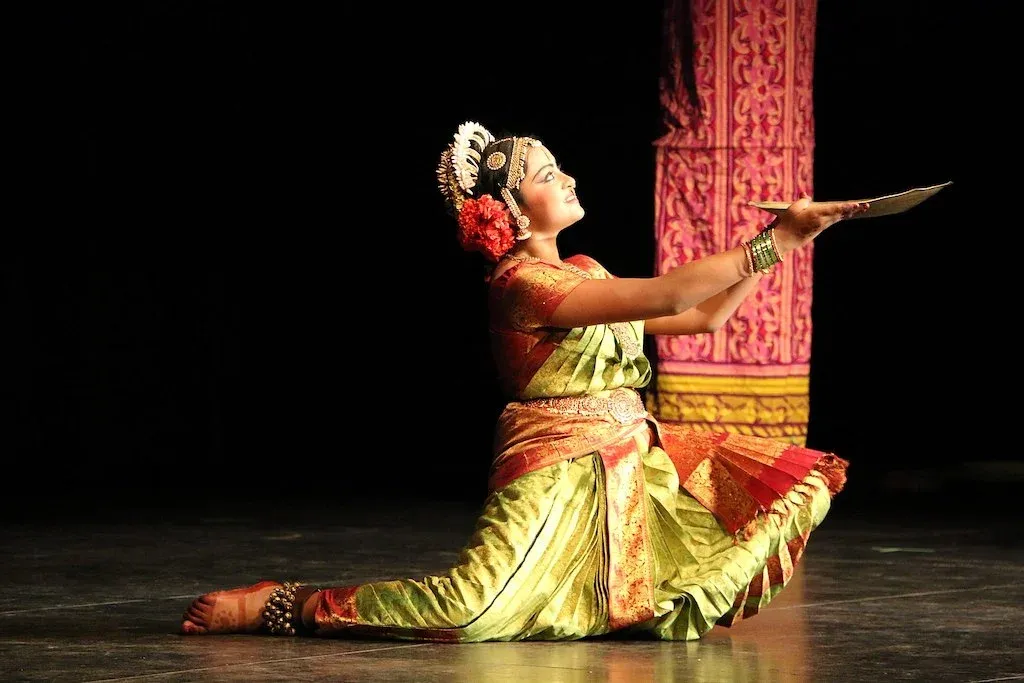
Kuchipudi, a revered classical dance form hailing from the state of Andhra Pradesh in South India, weaves together the grace of movement, the eloquence of expression, and the richness of cultural heritage. Born from the ancient traditions and temple rituals of the region, Kuchipudi has evolved into a mesmerizing art form that enthrals audiences around the world with its captivating performances.
With its roots dating back to the 2nd century BCE, Kuchipudi traces its origins to the Bhakti movement, which emphasized devotion to the divine through music and dance. This classical dance form draws inspiration from the traditional Natya Shastra, an ancient treatise on performing arts, and has been passed down through generations from gurus (teachers) to disciples in the guru-shishya parampara.
Kuchipudi’s unique blend of dance, music, and storytelling sets it apart from other classical dance forms in India. It encompasses both the graceful and expressive aspects of abhinaya (acting) and the rhythmic complexities of nritta (pure dance). This amalgamation of expressions allows Kuchipudi to communicate narratives from ancient myths, epics, and historical events with emotive artistry.
The dancers of Kuchipudi, known as “Kuchipudi exponents,” exhibit incredible skill in their movements, characterized by swift footwork, intricate hand gestures, and a seamless flow of expressions that bring characters to life on the stage. The accompanying music and percussion add depth to the performances, enhancing the narrative and elevating the visual spectacle.
Historical Background and Temple Traditions
To understand the origins of Kuchipudi, we must delve into its historical roots and its deep connection with temple traditions. The dance form takes its name from the village of Kuchipudi in the Indian state of Andhra Pradesh, where it originated. It was nurtured and patronized by the ancient Brahmin communities, who passed down the art form from generation to generation.
Kuchipudi found its spiritual significance as part of Bhagavata Mela, a traditional temple dance-drama performed during annual festivals in honour of Lord Krishna. In the sacred temples of Andhra Pradesh, skilled artists would bring the mythological stories of Lord Krishna to life through dance and drama. These performances were not only a form of artistic expression but also a means of spiritual devotion and connecting with the divine.
Over the centuries, Kuchipudi continued to evolve and adapt, incorporating elements from various art forms like drama, music, and storytelling. It expanded its repertoire to include themes from ancient epics like the Ramayana and the Mahabharata, as well as historical events from Indian history.
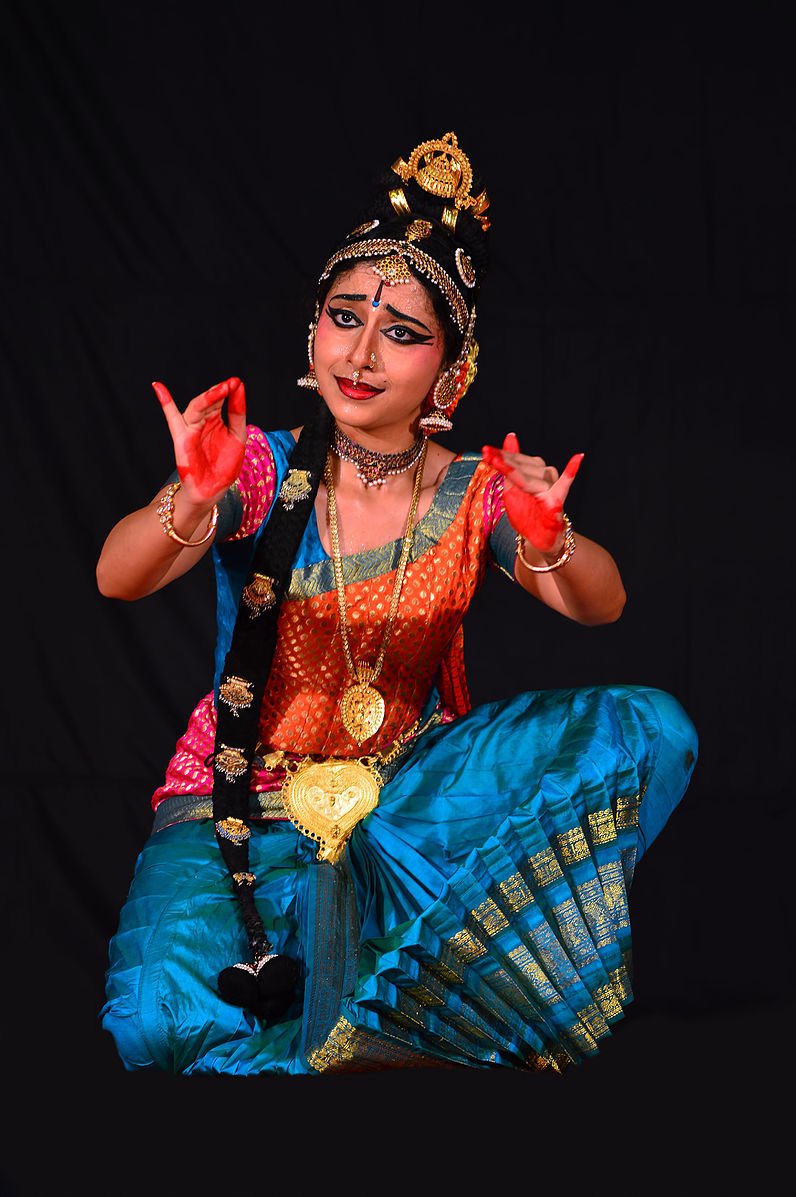
The classical dance form of Kuchipudi also experienced influences from the Bhakti movement, a devotional movement that emerged in medieval India. The Bhakti saints, through their songs and compositions, celebrated the love and devotion for the divine, inspiring artists to infuse their performances with a deep sense of spirituality and emotion.
One of the prominent figures in the revival and popularization of Kuchipudi was Siddhendra Yogi, a 17th-century dance scholar and exponent. He is credited with shaping Kuchipudi into a structured and refined classical dance style. His contributions, known as “Kuchipudi Yakshaganam,” incorporated elements of both dance and drama, laying the foundation for the present-day Kuchipudi performances.
In the 20th century, Kuchipudi received recognition as one of the eight major Indian classical dance forms by the Sangeet Natak Akademi, India’s National Academy of Music, Dance, and Drama. This official recognition elevated Kuchipudi to a prominent status, leading to increased opportunities for performance and preservation.
Today, Kuchipudi continues to thrive as a revered classical dance form, attracting dancers, scholars, and audiences from across the globe. Its preservation and propagation are upheld by various cultural institutions, dance academies, and dedicated gurus who pass on the art form’s legacy to the next generation.
Key Elements and Characteristics of Kuchipudi
Kuchipudi is renowned for its unique blend of grace, elegance, and dramatic storytelling. Its key elements and characteristics set it apart as a distinct and mesmerizing classical dance form.
Abhinaya: The Art of Expressional Dance
At the heart of Kuchipudi lies abhinaya, the art of emotive expression. Through intricate hand gestures known as mudras and subtle facial expressions, dancers convey a range of emotions, from love and devotion to anger and sorrow. The dancers’ expressive prowess allows them to transform into various characters, breathing life into mythological tales and historical narratives.
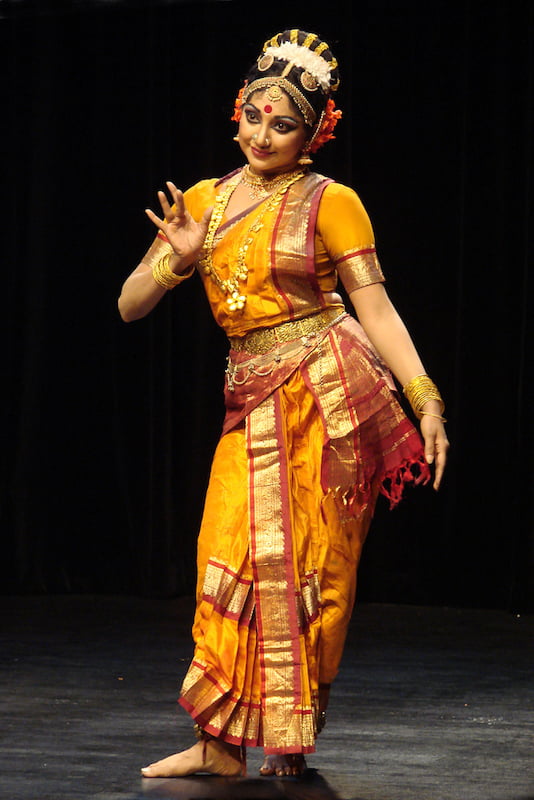
Nritta: The Beauty of Pure Dance
Kuchipudi’s nritta aspect focuses on pure dance, showcasing the dancer’s technical brilliance and rhythmic footwork. The nimble movements, intricate footwork patterns, and graceful poses create a mesmerizing visual spectacle. The rhythmic patterns, executed with precision, add vibrancy and energy to the performances, captivating audiences with their sheer elegance.
Tala and Layakari: Rhythmic Complexity
Kuchipudi is known for its complex rhythm patterns and layakari, which refers to the skillful variations in tempo and rhythmic play. Dancers synchronize their movements with the music’s beats and rhythmic cycles (talas), seamlessly transitioning between different rhythms and showcasing their mastery over laya (tempo).
Narratives and Storytelling
A defining feature of Kuchipudi is its ability to tell intricate stories through dance and drama. The performances often depict episodes from Indian epics like the Ramayana and the Mahabharata or portray historical events and folklore. The dancers use their expressive dance and gestures to narrate these narratives, drawing the audience into a world of mythical and historical tales.
Intricate Costumes and Makeup
Kuchipudi dancers don elaborate and colourful costumes that reflect the traditional attire of ancient times. The costumes are adorned with intricate embroidery and jewels, adding to the visual splendour of the performances. The makeup, known as “sollukattu,” highlights the dancers’ eyes and facial expressions, enhancing their emotive storytelling.
Solo and Group Performances
Kuchipudi offers a rich repertoire of solo and group performances. Solo performances provide the dancer with the space to showcase their individual artistry and creativity, while group performances exemplify the harmony and coordination among the dancers as they present intricate choreographies in unison.
Guru-Shishya Parampara: Passing Down the Tradition
Kuchipudi continues to be passed down through the revered guru-shishya parampara, where the knowledge and techniques are transmitted from guru (teacher) to shishya (disciple). This traditional method ensures the preservation of the art form’s authenticity and its continuity through generations.
Dance Techniques and Movements in Kuchipudi
Kuchipudi’s allure lies not only in its expressive storytelling but also in its intricate dance techniques and movements. The dancers’ precise execution of movements and graceful expressions add depth and charm to the performances.
Mandala: Graceful Poses and Stances
The foundation of Kuchipudi lies in its postures and stances, known as mandala. Dancers seamlessly transition between various stances, displaying a sense of balance and poise. These graceful poses form the building blocks of the choreography, adding elegance and visual appeal to the performances.
Bhramaris: Graceful Spins
Kuchipudi is known for its nimble spins and rotations, known as bhramaris. Dancers execute these swift spins with finesse and precision, adding a dynamic element to the performances. The bhramaris symbolize the fluidity of the dancer’s movements and serve as captivating moments in the choreography.
Kalaapams: Artistic Movements
Kalaapams are artistic and creative movements that Kuchipudi dancers employ to showcase their skill and versatility. These movements include intricate hand gestures, eye movements, and body expressions that breathe life into the characters portrayed. The fluidity and grace of kalaapams enhance the emotional storytelling of the performances.
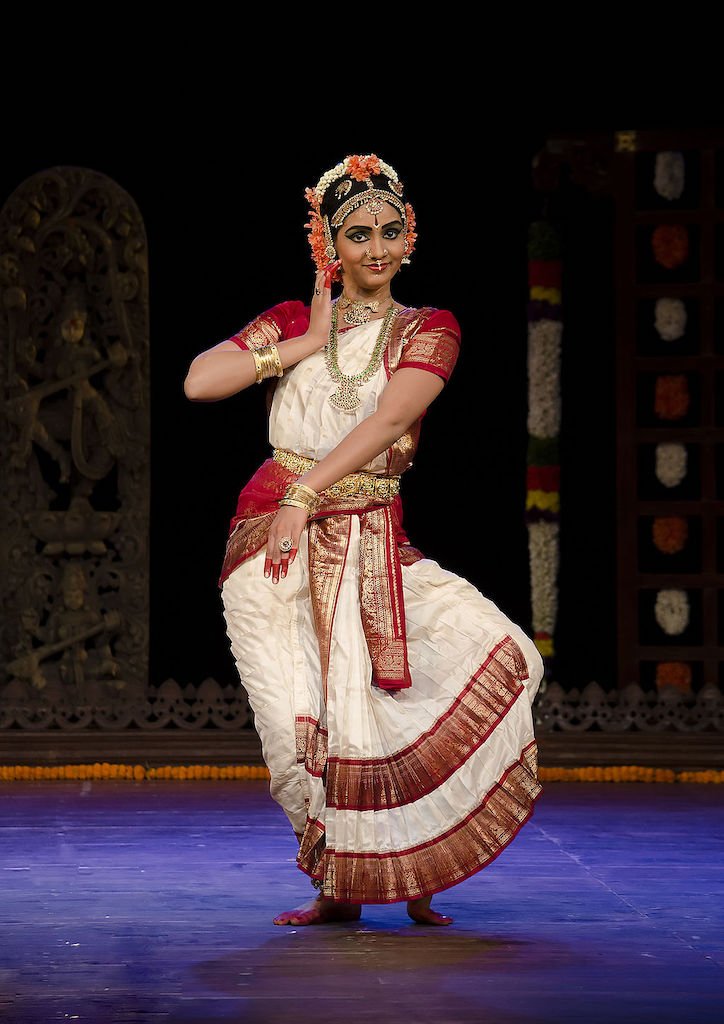
Jathis: Rhythmic Patterns
Kuchipudi performances often include jathis, which are intricate rhythmic patterns executed through footwork and hand gestures. These rhythmic sequences add a vibrant and dynamic dimension to the dance. The dancers’ synchronized execution of jathis showcases their technical finesse and rhythmic mastery.
Nritta Hasta: Pure Dance Hand Gestures
Nritta hasta refers to the use of hand gestures primarily for pure dance sequences. The dancers create geometric patterns and rhythmic formations with their hands, enhancing the aesthetic appeal of the performances. Nritta hasta complements the rhythm-oriented segments of the dance, showcasing the beauty of hand movements.
Abhinaya Hasta: Expressional Hand Gestures
Abhinaya hasta includes hand gestures specifically used for expressing emotions and depicting characters in storytelling segments. Each hand gesture conveys a specific meaning or emotion, allowing the dancers to effectively portray various characters and narratives. The expressive power of abhinaya hasta captivates the audience, evoking a wide range of emotions.
Ardhamandali: Half Sitting Posture
Ardhamandali is a signature posture in Kuchipudi, where the dancer assumes a half-sitting position with one leg bent and the other extended. This posture highlights the dancer’s flexibility and grace and allows for seamless transitions between movements and poses.
Music and Instruments in Kuchipudi
The enchanting performances of Kuchipudi are complemented by soul-stirring music and the melodious sounds of traditional instruments. The accompanying music plays a vital role in enhancing the emotive storytelling and rhythmic brilliance of the dance.
Carnatic Music: The Musical Framework
Kuchipudi dance is intricately woven with Carnatic music, one of the oldest classical music traditions in India. The rich melodic and rhythmic elements of Carnatic music provide the foundation for the choreography and improvisation in Kuchipudi performances. The synergy between dance and music allows the dancers to interpret the musical intricacies and breathe life into the compositions.
Natuvangam: The Conductor’s Role
In Kuchipudi, the role of a conductor is traditionally fulfilled by the “natuvanar” or “sollukattu vidwan.” The natuvanar plays a crucial role in guiding the dancers through the performance, providing rhythmic cues and cues for expressions. They use rhythmic syllables known as “sollukattu” to maintain the tempo and synchronize the dancers’ movements with the music.
Mridangam: The Heartbeat of Kuchipudi
The mridangam, a double-headed drum, is one of the essential percussion instruments in Kuchipudi performances. It provides the rhythmic foundation for the dance, adding depth and complexity to the compositions. The mridangam artist skillfully weaves intricate rhythms, enhancing the dancer’s footwork and movements.
Violin: Melodic Support
The violin, with its soulful melodies, complements the mridangam and vocal music in Kuchipudi performances. The violinist adds depth and emotional richness to the dance by interpreting the ragas (musical modes) and improvising alongside the dancers’ movements. The expressive quality of the violin perfectly complements the dancers’ abhinaya, enriching the overall experience.
Flute: Ephemeral Melodies
The melodious sounds of the flute add a touch of ethereal beauty to Kuchipudi performances. The flute artist weaves delicate melodies, evoking emotions and enhancing the visual storytelling. The flute’s soft, evocative notes beautifully accompany the dancers’ graceful movements, creating an enchanting ambiance.
Cymbals (Manjira or Talam): Rhythmic Accents
Cymbals, also known as manjira or talam, play a vital role in accentuating the rhythmic patterns in Kuchipudi. The dancers often hold cymbals in their hands and produce rhythmic sounds that synchronize with the mridangam and other percussion instruments. The sharp and distinct sounds of cymbals add a vibrant layer to the rhythmic tapestry of the dance.
Sitar, Veena, and Harmonium: Variations in Music
In some Kuchipudi performances, sitar, veena, and harmonium may also be used to provide variations in the musical accompaniment. These instruments add depth and versatility to the compositions, further enhancing the artistic expressions of the dancers.
Kuchipudi Costumes and Makeup: Splendour and Grandeur
The allure of Kuchipudi goes beyond its mesmerizing dance movements and enchanting music. The elaborate costumes and intricate makeup worn by the dancers add a touch of splendor and grandeur to the performances. Let’s delve into the traditional attire and adornments that bring visual beauty to the captivating world of Kuchipudi.
Traditional Kuchipudi Costume
The traditional costume of a Kuchipudi dancer is a resplendent sight to behold. The female dancers wear a saree, known as the “Kuchipudi saree,” which is draped in the unique “Nivi” style, characteristic of the region. The saree is adorned with intricate embroidery, zari work, and embellishments, adding elegance and grace to the dancer’s movements.
Male Costume
Male dancers in Kuchipudi typically wear a dhoti, a traditional garment wrapped around the waist and legs. The dhoti is paired with a silk or cotton angavastram, a decorative shawl, draped across the shoulders. The male costume exudes a sense of regal charm and complements the dance movements with its understated grace.
Jewelry and Adornments
Kuchipudi dancers adorn themselves with an array of exquisite jewelry, accentuating their costumes and adding a touch of opulence. The female dancers wear traditional jewelry pieces, such as necklaces, earrings, bangles, and anklets, made of gold or silver and studded with precious gemstones. These adornments reflect the cultural heritage of the region and enhance the visual appeal of the performances.
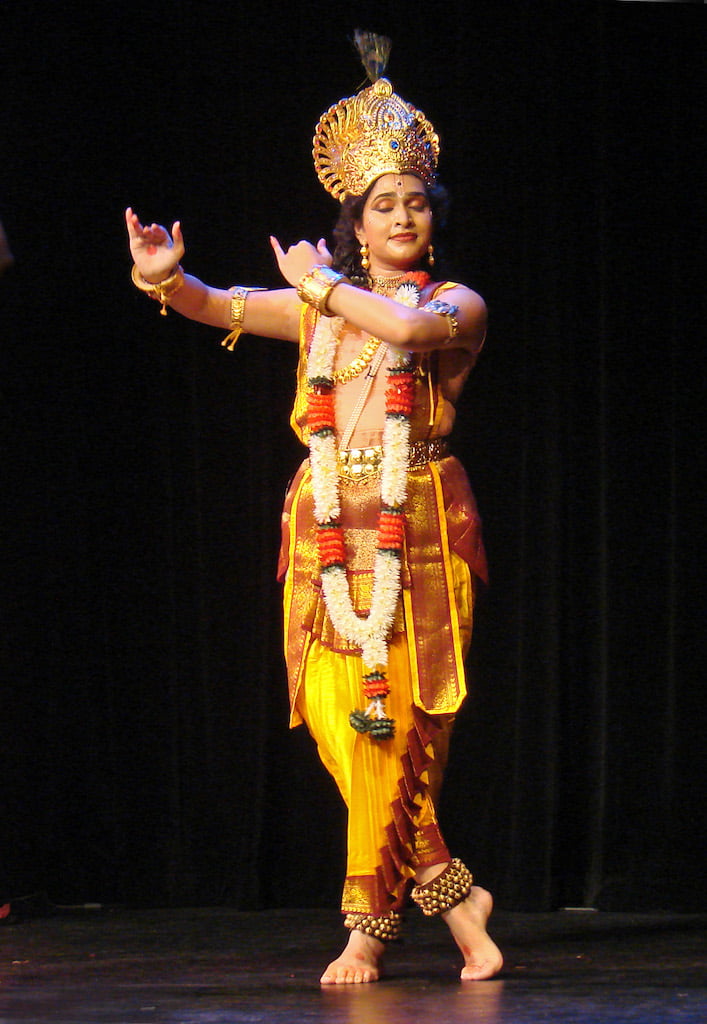
Makeup: Emphasizing Expressions
The makeup, known as “sollukattu,” plays a significant role in Kuchipudi performances. The dancers use natural colors like saffron and white to highlight their facial features, accentuating their expressions and emotions. The makeup adds depth to the characters portrayed and allows the audience to connect with the emotions conveyed through abhinaya.
Alta and Rangoli: Embellishments for the Feet
Kuchipudi dancers apply alta, a red dye, to the soles of their feet, enhancing the visual appeal of their footwork. The bright red hue beautifully contrasts with the traditional costumes, creating a striking visual effect. Additionally, rangoli patterns, drawn with rice flour, are often created around the dance floor, adding a decorative element to the performance space.
Hair and Headpiece
Female dancers typically tie their hair in a traditional bun or braid and adorn it with flowers, adding a touch of femininity and grace to their appearance. Some dancers also wear a traditional headpiece or “jada” with flowers, enhancing the overall aesthetics of the dance.
Themes and Repertoire: Narratives Brought to Life
Kuchipudi, with its rich heritage and artistic brilliance, offers a diverse repertoire of narratives that come to life through emotive expressions and graceful movements. The performances depict a wide range of themes, from mythological epics to historical events, each narrated with passion and precision. Let’s immerse ourselves in the captivating stories and explore the diverse themes portrayed in Kuchipudi.
Mythological Tales: Epics and Puranas
Kuchipudi often draws inspiration from Hindu mythological epics like the Ramayana and the Mahabharata. The dancers skillfully portray the beloved characters like Lord Rama, Sita, Krishna, and Arjuna, reenacting iconic episodes with vivid expressions and gestures. The mythological narratives resonate deeply with the audience, evoking a sense of spirituality and cultural reverence.
Devotional Compositions: Bhakti Literature
Kuchipudi performances also include compositions from Bhakti literature, showcasing the devotion and love for the divine. The dancers embody the essence of devotion, narrating the bhajans and compositions of renowned poets and saints. The emotive expressions and graceful movements communicate a profound connection with the spiritual realm, inspiring a sense of devotion in the hearts of the audience.
Historical Stories: Kings and Heroes
Kuchipudi unfolds historical tales, bringing to life the valor and nobility of kings, warriors, and heroes. The performances depict episodes from Indian history, reenacting battles, victories, and moments of triumph. The dancers’ abhinaya transcends time, transporting the audience to significant historical eras and connecting them with the nation’s heritage.
Folklore and Local Legends
Kuchipudi also embraces regional folklore and local legends, celebrating the rich cultural diversity of India. The performances showcase stories from various Indian states, expressing the essence of different cultural traditions and folktales. Through these portrayals, Kuchipudi becomes a tribute to the vibrant tapestry of India’s cultural heritage.
Dance Dramas: Expressing Human Emotions
Kuchipudi dance dramas, known as “Bhamakalapam” and “Parijatapaharanam,” present multifaceted narratives that delve into human emotions and experiences. These dance dramas explore love, longing, sacrifice, and the eternal pursuit of truth. The dancers’ abhinaya showcases the human journey, evoking empathy and resonance with the audience.
Themes of Social Relevance
In contemporary Kuchipudi performances, artists also use the dance form to address themes of social relevance and contemporary issues. Through creative choreography and storytelling, they raise awareness about environmental concerns, gender equality, and societal challenges, transforming the classical dance form into a medium for reflection and change.
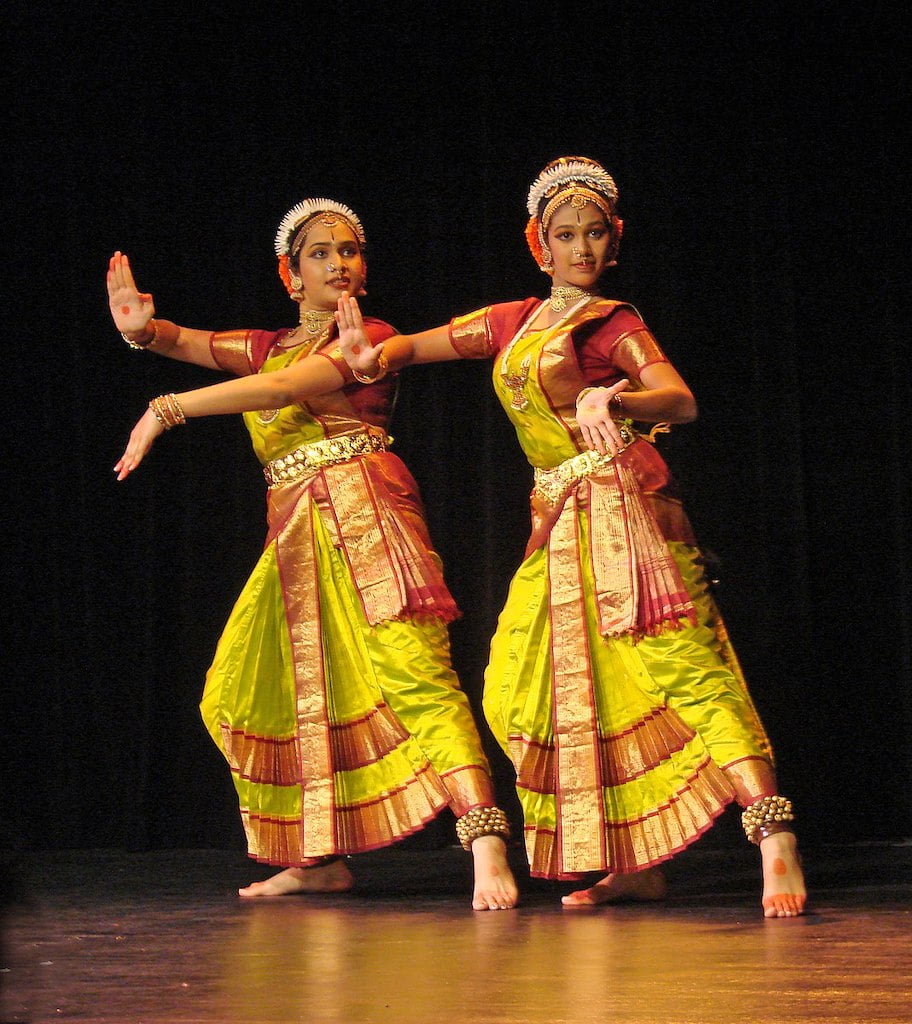
Notable Kuchipudi Gurus and Performers: Preserving the Timeless Beauty
The preservation and propagation of Kuchipudi as a classical dance form owe much to the dedicated gurus (teachers) and skilled performers who have devoted their lives to this ancient art. Through their relentless efforts, Kuchipudi has flourished, captivating audiences around the world.
Vedantam Lakshminarayana Sastry (Vedantam Satyanarayana Sarma)
A legendary figure in the world of Kuchipudi, Vedantam Lakshminarayana Sastry, popularly known as Vedantam Satyanarayana Sarma, was a highly influential guru and performer. He was instrumental in elevating the status of Kuchipudi as a recognized classical dance form and training numerous students in its traditional techniques.
Vempati Chinna Satyam
Renowned for his impeccable footwork and dynamic expressions, Vempati Chinna Satyam was a pioneering guru who brought Kuchipudi to the global stage. He founded the Kuchipudi Art Academy in Chennai, nurturing a generation of talented dancers and choreographers.
Yamini Krishnamurthy
An iconic dancer and an embodiment of grace and elegance, Yamini Krishnamurthy has played a vital role in popularizing Kuchipudi internationally. With her mesmerizing performances and deep understanding of the art form, she has left an indelible mark on the world of Indian classical dance.
Swapnasundari
Known for her virtuosity in Kuchipudi and dedication to preserving its traditional style, Swapnasundari is a celebrated guru and performer. She has played an instrumental role in imparting Kuchipudi training to aspiring dancers and promoting the dance form’s cultural heritage.
Raja and Radha Reddy
The dynamic duo of Raja and Radha Reddy have been instrumental in promoting Kuchipudi as a collaborative dance form. They are renowned for their intricate synchronization and evocative expressions. Together, they have performed globally, spreading the essence of Kuchipudi to diverse audiences.
Manju Bhargavi
A leading exponent of Kuchipudi, Manju Bharggavee is celebrated for her captivating performances and devotion to preserving the art’s authenticity. As a dedicated guru, she continues to nurture the next generation of Kuchipudi dancers.
Deepika Reddy
With her vibrant energy and innovative choreography, Deepika Reddy has pushed the boundaries of Kuchipudi as a contemporary dance form. Her creative approach has given the classical dance an avant-garde appeal, making it relevant to contemporary audiences.
These are just a few of the many revered gurus and performers who have dedicated their lives to Kuchipudi, passing down the art form’s legacy through the guru-shishya parampara. Their unwavering commitment to the art has ensured that Kuchipudi remains a living tradition, inspiring future generations of dancers.
Kuchipudi in the Modern Era: A Global Artistic Sensation
Kuchipudi, a classical Indian dance form, has evolved into a global phenomenon in the modern era. Its combination of expressive narratives, intricate footwork, and graceful expressions has garnered followers and practitioners across diverse cultures. The dance has taken the world stage through international performances, collaborations with other artistic styles, and the establishment of Kuchipudi academies abroad. Technological advances have enabled digital outreach and virtual performances, while cultural exchange programs have promoted cross-cultural understanding. Kuchipudi festivals worldwide celebrate the art’s brilliance, and it serves as a form of cultural diplomacy, bridging nations. Through its evolution, Kuchipudi remains rooted in tradition, preserving India’s cultural heritage while enchanting audiences with its timeless beauty.





